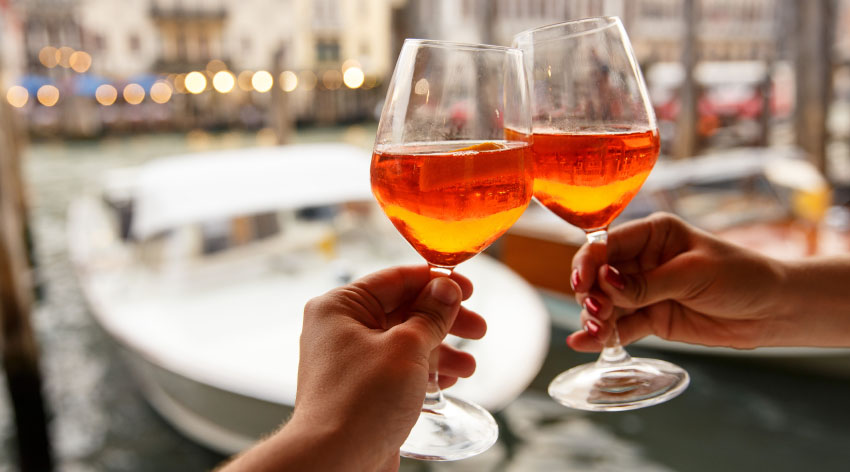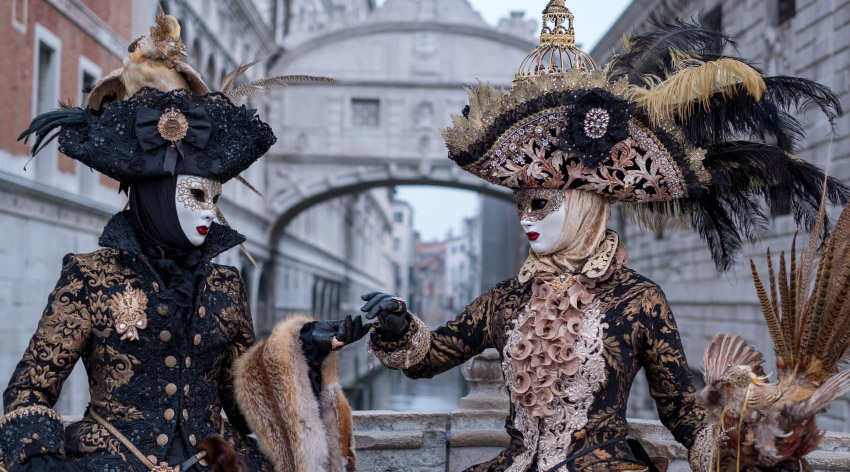
The Veneto region of Italy is no doubt most famous worldwide for its capital city of Venice, and that alone could be enough to warrant Veneto’s status as the most visited region of Italy. But there are nearly 5 million people in 6 total provinces—including Verona (famed as the setting of Shakespeare’s “Romeo & Juliet”), where Juliet’s House boasts the stone balcony said to have inspired Shakespeare to write his play.
Veneto’s geography is incredibly varied, from the Carnic Alps to the Po Valley, the eastern shore of Lake Garda, Italy’s largest, to the Adriatic seacoast. A historical dependence on agriculture has transformed into what is today one of Italy’s richest centers of industrialization and export—Veneto enjoys Italy’s third-highest GDP.
Tourism is still the main economic driver for the region, however. And no wonder. Veneto’s long history of civilization means today an embarrassment of riches with its art, history, culture, cuisine and wine. From the Venetian gondolas to St. Mark’s Square (home to the eponymous Campanile & Basilica, as well as the Doge’s Palace and Torre dell’Orologio) to the regionwide displays of art of Giotto, Donatello, Carpaccio, Bellini and more including modern artists of the “Venetian School,” art and architecture have thrived in Veneto for longer than the Cathedral of Santa Maria has been standing—and it was founded in 639 AD.

Wine enthusiasts can find miles of vineyards in Treviso—nicknamed the “Prosecco Hills” not only for its production of the sparkling wine but after the town of Prosecco itself; Treviso is also home to the town of sparkling wine fame Valdobbiadene. The origin of the word ‘spritz’ comes from the original Venetian language and the town of Padua is home to the key ingredient of the worldwide favorite Aperol Spritz. Soave, Bardolino, Amarone, Valpolicella, Moscato and Pinot Grigio grapes all find a home in Veneto as well. Much of the wine in the region is homemade by small-scale enthusiasts.
Asiago and Grana Padano are only two of the PDO (protected origin) cheeses famously from Veneto. Sopressa Vicentina and Prosciutto Veneto Berico-Euganeo are two of the famous pork products hailing from the region. White asparagus, radicchio, Veronese Vialone Nano Rice and the Bean of Lamon are all typical food products from the region. With the sea and the Venetian lagoon nearby, seafood is featured in many meals.
Italians take their food seriously, of course, and Venice is no exception. In fact, though the city itself has a modest population of only about a quarter-million persons, there are no less than 32 Michelin listed restaurants in the city. Beyond the guidebook, good advice for finding a great restaurant is similar to the rest of Italy—get a little off the tourist trail and look for a smaller, family-owned restaurant offering traditional cuisine and specializing in a particular type of regional fare.
Going to Veneto in the winter can prove surprisingly nice; while roughly located at the same latitude as the state of Maine, the region enjoys a much milder winter climate thanks to the dry desert Scirocco winds and the tropical currents flowing north. Yes, you may see some snow occasionally, but wintertime also means the opera, symphony and theater seasons are well underway—and a show at the Teatro La Fenice is not to be missed– no matter the season.

Wintertime in Venice also means a terrific setting for Carnevale—think Mardi Gras, Venetian style. While Carnevale is celebrated throughout Italy, Venice’s fame for its celebration and elaborate masks is nearly unrivaled in Europe. Carnevale celebrations begin ten days to two weeks before the beginning of the Lent that leads up to Easter.